The Novara class was one of two largely similar, but not sister-ships, two frigates with various interesting backstories and fates, with long and illustrious career for the Austro-Hungarian Navy. At thei design core, two typical sailing frigates whch later received steam engine. Powerfully armed, with a large sail area, and quite large for Mediterranean theater, both took part in the Battle of Lissa, and saw the 1880s an the radical transformation and modernization of the fleet.
 SMS Novara
SMS Novara
These were the first modern, large steam frigates of the new Austro-Hungarian Navy. But since the rising Empire lacked facilities and expertise for large warship construction, they were built in Venice Naval Yard. The first of the two near-sister, SMS Novara, was in reality the ex-sailing frigate Minerva, laid down on 4 November 1843, but still not launched years after. She was partially completed when renamed “Italia” by Venetian revolutionaries in 1848. Finally she would be launched with the name “Novara” in 1850:
The name commemorated the Austrian Vicory of Novara in March 1849, as following the Austrians’ retaking of Venice in August 1849, Field Marshal Radetzky visited the shipyard and saw the “Italia” in construction there; Officers petitioned him to have the the frigate take for the Austrian Navy and renamed renamed in honour of his victory over King Charles Albert. Construction restarted under Austrian supervision and the completed hull left the slipway in November 1850. Novara entered service for the Austrian Navy and had a ten years sail-only career.
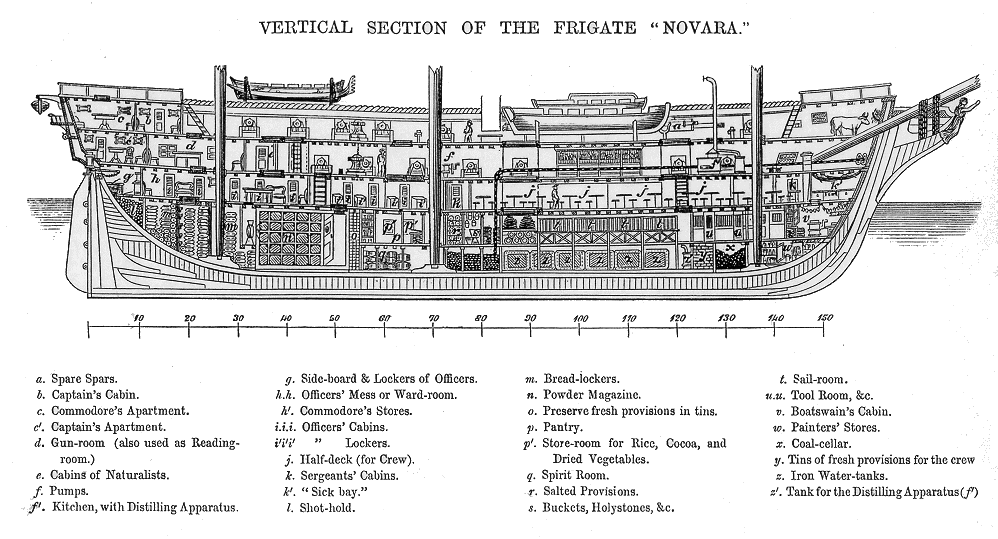
Cutaway, close
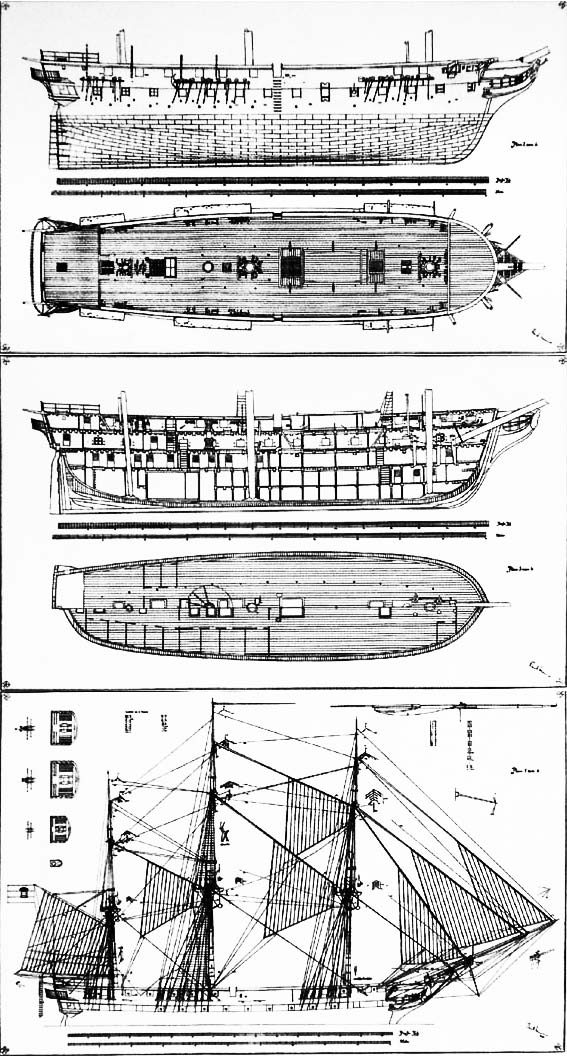
Overview of the ship, profiles and deck plans
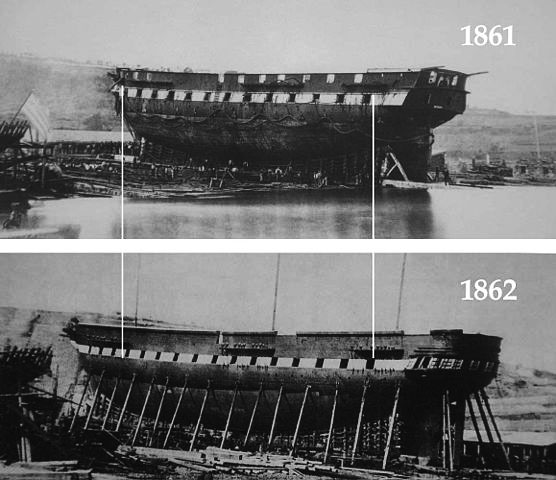
Novara in 1861 and 1862
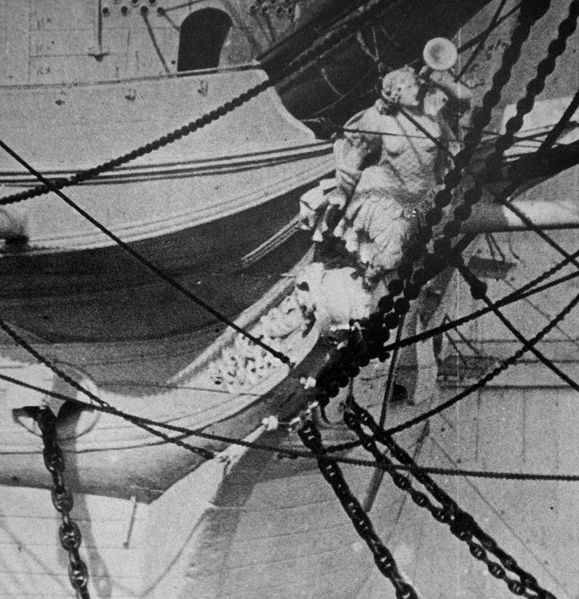
Figurehead photo
A world tour under sails
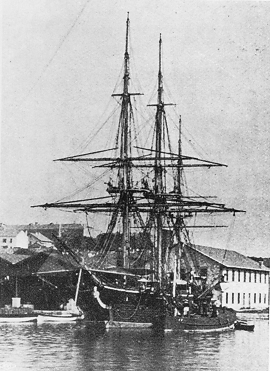 SMS Novara made a circumnavigation of the earth lasting from April 1857 to August 1859. This was an important journey of research and exploration which brought enough material and data to create the Naturhistorisches Museum in Vienna. A team of brillant natural scientists were part of the trip like Georg Ritter von Frauenfeld, curator in the invertebrate department of the Imperial museums. The volume of materual collected was so important searchers are still making discoveries today.
SMS Novara made a circumnavigation of the earth lasting from April 1857 to August 1859. This was an important journey of research and exploration which brought enough material and data to create the Naturhistorisches Museum in Vienna. A team of brillant natural scientists were part of the trip like Georg Ritter von Frauenfeld, curator in the invertebrate department of the Imperial museums. The volume of materual collected was so important searchers are still making discoveries today.
The Novara expedition of 1857–1859 was also a world’s first: The first large-scale scientific and round-the-world mission of that scale, for the Austrian Imperial navy. One of the goals was to dicover potential colonial investments and interesting trade spots for the young Austrian Trade Company. Authorized aboardnd blessed by Archduke Maximillian, the journey of the largest Austrian Frigate lasted two years three months total.
To be exact, it started on 30 April 1857, until 30 August 1859 under command of Kommodore Bernhard von Wüllerstorf-Urbair. The crew comprised 345 officers and rating but the scientific team comprised seven scientists with a lot of equipments. Preparation were made at the Imperial Academy of Sciences in Vienna. Specialized scholars under the geologist Ferdinand von Hochstetter and zoologist Georg von Frauenfeld recruited the scientist and planned the exploration in detail.
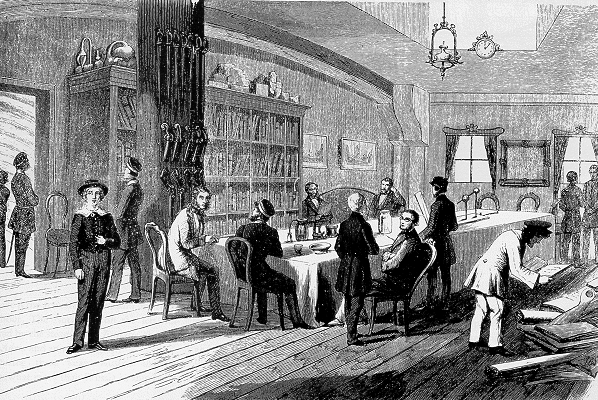
Engineer Selleny’s drawing of the interior
During the expedition, the team gathered the first coca plant to be examined, notably when stopping at St. Paul in the Nicobar Islands, and on New Zealand. The latter island received the first thorough and precise first geological mapping by Hochstetter. The oceanographic research done in the South Pacific collected samples at various dephts, made an earl underwater mapping, collected hundreds of species and revolutionized both oceanography and hydrography in their time.
The total of botanical and zoological collections amounted to 26,000 preparations as well as cultural artefacts collected in these islands, which considerably enriched the Austrian museums as a whole. Another scientist of note was Johann Natterer, a veteran scientist whioch already collected specimens for the Viennese Natural Museum for 18 years in South America. Geomagnetic observations all along the expedition boosted the field of study in an unprecedented way, and contributed to scientific knowledge. From the coca plant leaves, the first pure cocaine was produced in 1860.
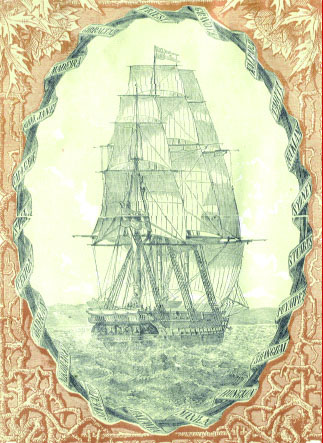
Expedition book cover
These results were compiled into a 21-binder report, now still exposed at the Viennese Academy of Sciences: The “Reise der österreichischen Fregatte Novara um die Erde (1861–1876)” published several times in various forms and extract along the following decades. The english-language account was published in three volumes by Karl Von Scherzer. Among others, the frigate visited Gibraltar, Madeira, Rio de Janeiro, Cape Town, St. Paul island, Ceylon, Madras, Nicobar Islands, Singapore, Batavia, Manila, Hong Kong, Shanghai, Puynipet Island, Stewart Island or Stuart Island, Sydney, Auckland, Tahiti, Valparaíso, Gravosa, before heding for Trieste.
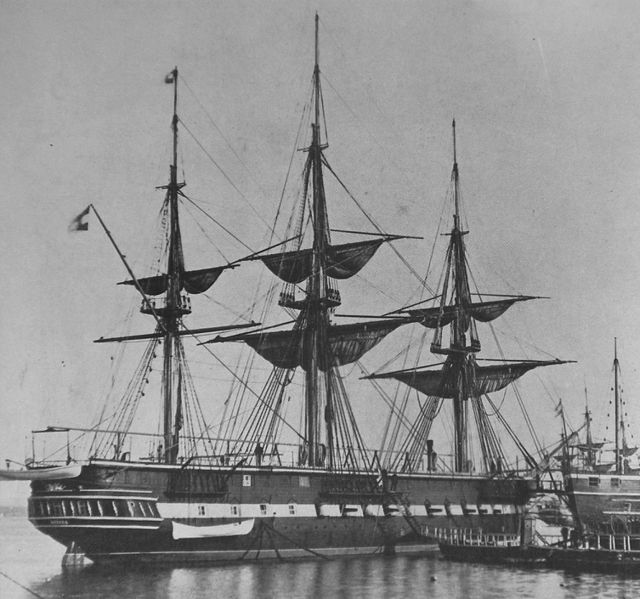
In 1856
The result was a book that was very important at the time, reproduced to 30,000 copies and second most successful popular scientific work in German language after von Humboldt’s 5-volume Cosmography. The 1200 pages, richly illustrated were titled: Karl von Scherzer: “Narrative of the Circumnavigation of the Globe by the Austrian Frigate “Novara” (B. von Wullersdorf-Urbair,) Undertaken by Order of the Imperial Government, Under the Immediate Auspices of His I. and R. Highness the Archduke Ferdinand Maximilian, Commander in-Chief of the Austrian Navy.”
Conversion
Then, she was towed to Trieste’s San Rocco Naval Yard, to be completed as a steam frigate, screw-driven with the help of STT yard. But the conversion only took place between 1861 and 1865, so ten years after. For this, the Austro-Hungarian yard had to basically cut the hull in the middle to add a large section in order to house the 2-cyclinder horizontal steam engine, single screw, four-bladed. The hull was also much strenghtened to cope with the extra lenght and displacement. She also had an interested mix of armament and the largest crew for an Austrian steam frigate, 550 officers and ratings.
Novara’s career
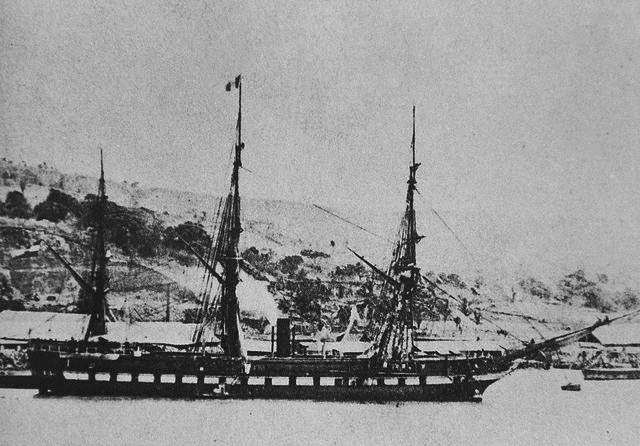
Novara in Martinique 1864
An important part of her early carrier was to carry in April 1864 Archduke Ferdinand Maximilian and his wife Charlotte to Veracruz for their establishment as the new Emperor and Empress of Mexico during the Second Mexican Empire (with the full support of French Emperor Napoleon III). She arrived in port on 28 May 1864 but his reign, back by French troops, was short. The hated regimed ended iona bloody revolution and 3 years later, Maximilian I of Mexico was captured and executed by the constitutional Mexican government headed by Benito Juárez. Admiral Wilhelm von Tegetthoff arrived against with SMS Novara to bring his body to Austria, arriving in Trieste on 16 January 1868.
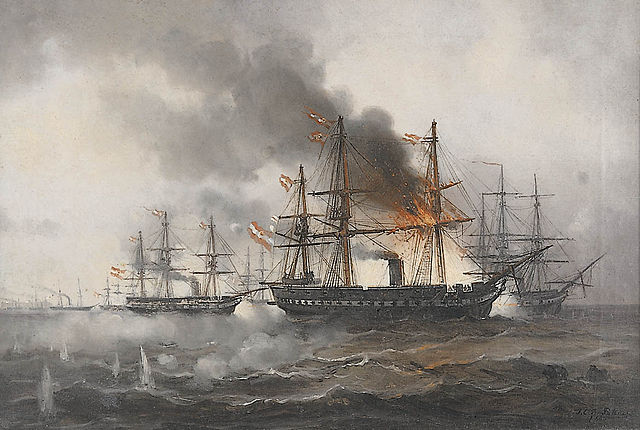
Noavara at Lissa
But the shining point of her career was incontestably the Battle of Lissa: On 20 July 1866 she was part of the Austrian fleet, formed in a wedge, off the island of Vis, as part of von Tegetthoff’s 2nd Division. She was commanded by Baron Anton von Petz, as flagship, alongside other wooden steam warships and as captain, had a Swedish naval officer named Erik af Klint. The latter was killed during the battle. Indeed, the vessel led the line, and under Kommodor von Petz took the 2nd Division exchanged broadside fire on the Italian rear, in direction of the 3rd Division.
Facing ironclads, Von Petz still hold his formation despite punishing damage and little on Italian vessels. SMS Novara was hit 47 times, killing many gunners, salors, officers includung the captain, and SMS Erzherzog Friedrich took a shell below the waterline while SMS Schwarzenberg eventually was completely destroyed, unable to steer and set afire and adrift.
SMS Novara served afterwards for another decade 1867-1877, and she was eventually examined in 1879, but estimated in poor conditions. She was not to be modernized due to the age of her wooden hull and instead, hulked in 1881, as permanently anchired training ship and broken up 18 years later, in 1899.
Novara 1855 Specifications |
|
| Dimensions | 76.79 x 14.32 m x 5.8 m |
| Displacement | 2,615 t (2,574 long tons) |
| Crew | 550 |
| Propulsion (1862*) | 1 shaft CP 4 Boilers 12 kts 3,300 nm range |
| Armament | 4 × 60-pdr Paixhans, 28 × 30-pdr BL, 2 × 24-pdr BLR |
 SMS Schwarzenberg
SMS Schwarzenberg
SMS Schwarzenberg, Novara’s near-sister ship
Design and conversion
SMS Schwarzenberg’s design was generally similar to Novara. She came from Venice arsenal too, towed and convered back in Austria, in 1861/62 at the Arsenal of Pola. She had been launched a first time on April 23, 1853, and after conversion was relaunched on April 11, 1862. As modernized, she displaced 1871 tons standard and 2,656 tons fully loaded. After conversion her draft went to 6.20 m and 6.50 fully loaded. She kept her frigate sail so to ensure best performances and sparing for long cruise her engine. The latter was a CP type steam with an output of 400 hp for 11 knots on steam alone. Under sail in optimal conditions she could reach about 12 kts. Before conversion she carried fifty-four 30-pounders, six 60-pounders. After conversion she was rearmed with just four 60-pounders on rails for a 90° arc of fire.
She also had two deck smoothbore 15.0 cm guns, while her main battery deck housed forty two 30-pounders. She also had four towed 24-pounders. From 1866 she carried thirty-six smoothbore 30-pounders, six smoothbore 60-pounders, four rifled 24-pounder breech-loaders, and to arm the crew for landing parties and close battles, some 200 rifles, 100 pistols, 36 revolvers, and 170 sabres. After her 1876 refit she carried eight modern rifled Krupp 15.0 cm guns, two 7.0 cm guns and still a provision of 104 carbines, 24 revolvers and 28 sabers. Her crew comprised 557 men as a sailing frigate, down to 498 as screw frigate alone.
1855 Schwarzenberg Specifications |
|
| Dimensions | 74 oa/64.40m pp x 14.88 m x 6.50 m |
| Displacement | 2,614/2,800+ t |
| Crew | 547 |
| Propulsion (1862*) | 1 shaft 2-cyl H engine 1,700 ihp, 11 kts |
| Armament (1864) | 6× 60-pdr Paixhans, 40× 30-pdr BL, 4× 24-pdr BLR |
Career of SMS Schwarzenberg
In Pola in 1955
After her commissioning in 1854, SMS Schwarzenberg served mainly in the eastern Mediterranean. In 1859 she was deployed in the Sardinian War, patrolling the Spignon Canal. In 1860 she was deployed to protect Austrian interests in Sicily and Naples. On October 17, 1861, she was rebuilt at Pola and had for new commander, Wilhelm von Tegetthoff himself. She cruised the eastern Mediterranean and visited Alexandria, Port Said, Jaffa, Beirut, Larnaca and Rhodes.
German-Danish War
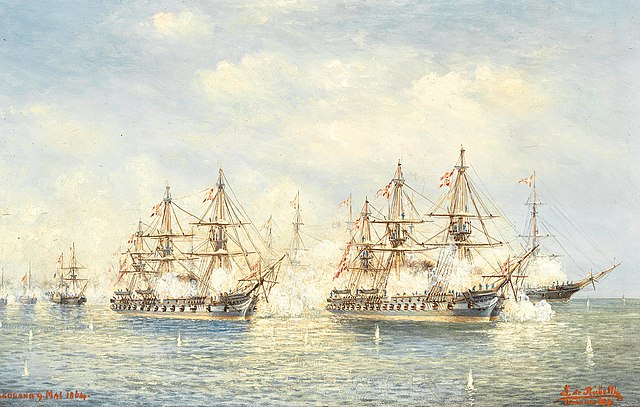
Painting of the battle by Ludwig Rubelli von Sturmfest
Closing on Smyrna on February 27, 1864, she met an Austrian Lloyd steamer, from which she received the order to march to the North Sea, for an operation in cooperation with the Prussian Navy against the Danish Navy (German-Danish War). Ammunition and coal were loaded in Corfu in March. She stopped in Malta, then Gibraltar and Algiers. On March 16, she already captured the Danish brig Grethe (Captain Jans Jansen), brought to Pola by a prize crew. She arrived in Cuxhaven on May 4th. Five days later she took part in the battle of Heligoland, as a flagship of the Austrian squadron.
At around 13:59, she opened fore on the Danish line at 3,500 m, and during the fight, closed down to 380 m. She received incendiary shots which set alight her foremast, and the fire rage on until after the battle. The fallen were buried in Ritzebüttel on May 11. On May 24, Max von Sterneck took command in place of Tegetthoff. By July 22-30 she was docked in Bremerhaven, receiving a new foremast. She remained in the North Sea until the end of the war and peace negociations, and orders to get back home in the beginning of October. She arrived in Pola on December 21, 1864 to be drydock for a long maintenance and refit. Her severed mast was recovered and acquired by King George of Hanover, in Herrenhausen and by 1938 taken to Vienna.
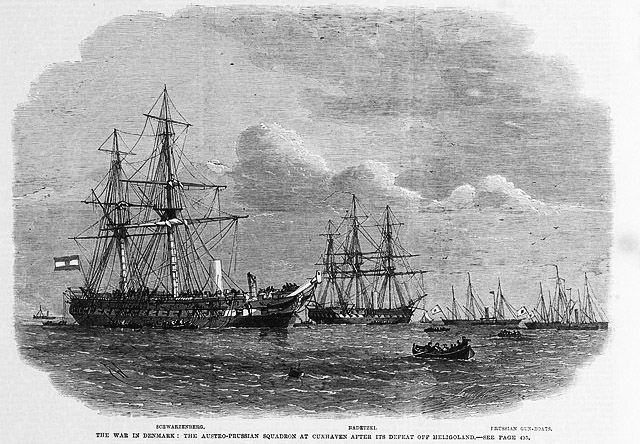
In repait in Cuxhaven after the battle
Battle of Lissa and fate
Wilhelm von Tegetthoff and crew, 1864
In 1865, SMS Schwarzenberg was sent in the Levant (Lebanese-Syrian coast) as flagship under overall command of Rear Admiral Tegetthoff. In February 1866 she was refitted in Pola for a long trip to East Asia and South America, later cancelled due to the rise of tensions with Prussia and Italy. On July 20, 1866, indeed war broke with Italy and she took part in the naval battle of Lissa under command of captain Georg Milossich. In the same division as her sister Novara, which was the lead vessel and flagship, she fired 286 rounds but received nine hits from the Italian ironclads, wounding only two. But damage was so considerable she was set adrift and no longer took part in the battle.
In 1869, like her sister but sooner, she was converted as a stationary hulk, a training ship in Pola. She was stricken from the list on November 25, 1890, and broken up.
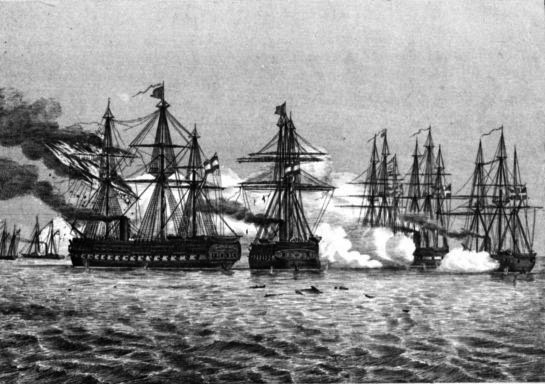
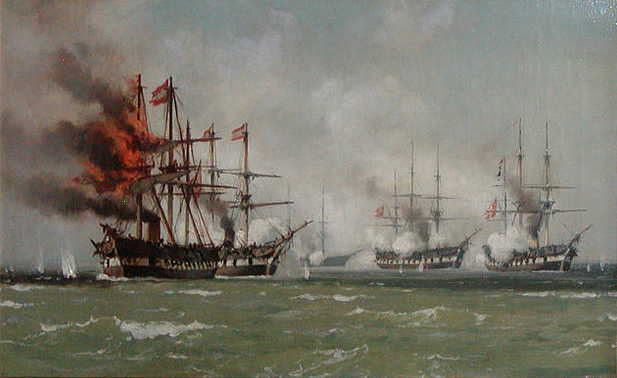
SMS Schwarzenberg at Heligoland
Src/Read more:
Books
“The Crustacean Collection of the Museum of Natural History in Vienna” (history), Peter C. Dworschak & Verena Stagl, 3rd Zoological Dept., Naturhistorisches Museum, Vienna
“Novara-Expedition” (port-by-port description), Kunsthistorisches Museum Wien, 2005, webpage: KHM-Novara-Expedition
“The Austrian Imperial Frigate SMS Novara” (history + photos), Michael Organ, 25 October 2006, Australian webpage
Organ, Michael (March 5, 2001). “Incident at Sikayana: A so-called Outrage carried out upon the Inhabitants of the Stewart Islands, by the Crew of the Austrian Frigate Novara, 16-17 October 1858”. Wollongong, New South Wales, Australia: University of Wollongong. Retrieved May 7, 2016.
Scherzer, Karl (1861–1863). Narrative of the circumnavigation of the Globe by the Austrian frigate Novara. London: Saunders, Otley & Co. Available online from copies digitized by various libraries. Biblioteca Brasiliana Guita e José Mindlin (monochrome): BBM
Donko, Wilhelm, “An Austrian View of the Philippines. The Austrian Scientist Karl von Scherzer on his visit in Manila aboard the frigate “Novara” in June 1858″. Published by epubli.de, Berlin 2012, 176 pages
“Embarkation of the Body of the Late Emperor Maximillian at Vera Cruz, Mexico”, The Illustrated London News, 11 January 1868, p. 32
Sieche, Erwin F. (1990). “Austria-Hungary’s Last Visit to the USA”. Warship International. XXVII (2): 142–164.
Treffer, G. (ed.), Die Weltumseglung der Novara, 1857-1859 (“The Round-the-World Voyage of the Novara”)
Turner, Brian, “Novara: Austria’s Ship of Fate” from “Heligoland Bight – Wooden Ship’s Last Sea Battle (9 May 1864)”
Links
michaelorgan.org.au/novara
novara-expedition.org
.nhm-wien.ac.at
SMS_Schwarzenberg_(1853)

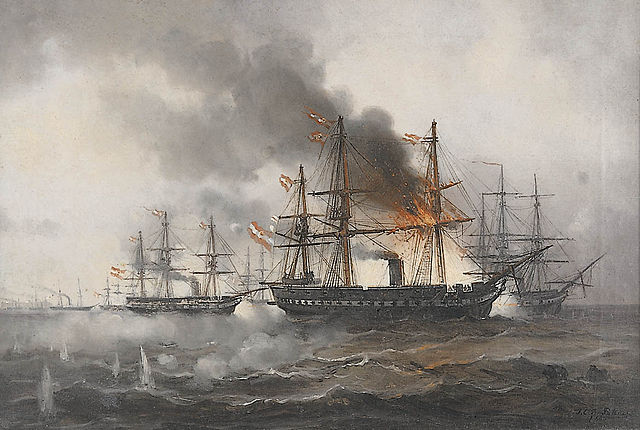

 Latest Facebook Entry -
Latest Facebook Entry -  X(Tweeter) Naval Encyclopedia's deck archive
X(Tweeter) Naval Encyclopedia's deck archive Instagram (@navalencyc)
Instagram (@navalencyc)





 French Navy
French Navy Royal Navy
Royal Navy Russian Navy
Russian Navy Armada Espanola
Armada Espanola Austrian Navy
Austrian Navy K.u.K. Kriegsmarine
K.u.K. Kriegsmarine Dansk Marine
Dansk Marine Nautiko Hellenon
Nautiko Hellenon Koninklije Marine 1870
Koninklije Marine 1870 Marinha do Brasil
Marinha do Brasil Osmanlı Donanması
Osmanlı Donanması Marina Do Peru
Marina Do Peru Marinha do Portugal
Marinha do Portugal Regia Marina 1870
Regia Marina 1870 Nihhon Kaigun 1870
Nihhon Kaigun 1870 Preußische Marine 1870
Preußische Marine 1870 Russkiy Flot 1870
Russkiy Flot 1870 Svenska marinen
Svenska marinen Søværnet
Søværnet Union Navy
Union Navy Confederate Navy
Confederate Navy Armada de Argentina
Armada de Argentina Imperial Chinese Navy
Imperial Chinese Navy Marinha do Portugal
Marinha do Portugal Mexico
Mexico Kaiserliche Marine
Kaiserliche Marine 1898 US Navy
1898 US Navy Sovietskiy Flot
Sovietskiy Flot Royal Canadian Navy
Royal Canadian Navy Royal Australian Navy
Royal Australian Navy RNZN Fleet
RNZN Fleet Chinese Navy 1937
Chinese Navy 1937 Kriegsmarine
Kriegsmarine Chilean Navy
Chilean Navy Danish Navy
Danish Navy Finnish Navy
Finnish Navy Hellenic Navy
Hellenic Navy Polish Navy
Polish Navy Romanian Navy
Romanian Navy Turkish Navy
Turkish Navy Royal Yugoslav Navy
Royal Yugoslav Navy Royal Thai Navy
Royal Thai Navy Minor Navies
Minor Navies Albania
Albania Austria
Austria Belgium
Belgium Columbia
Columbia Costa Rica
Costa Rica Cuba
Cuba Czechoslovakia
Czechoslovakia Dominican Republic
Dominican Republic Haiti
Haiti Hungary
Hungary Honduras
Honduras Estonia
Estonia Iceland
Iceland Eire
Eire Equador
Equador Iran
Iran Iraq
Iraq Latvia
Latvia Liberia
Liberia Lithuania
Lithuania Mandchukuo
Mandchukuo Morocco
Morocco Nicaragua
Nicaragua Persia
Persia San Salvador
San Salvador Sarawak
Sarawak Uruguay
Uruguay Venezuela
Venezuela Zanzibar
Zanzibar Warsaw Pact Navies
Warsaw Pact Navies Bulgaria
Bulgaria Hungary
Hungary

 Bundesmarine
Bundesmarine Dutch Navy
Dutch Navy Hellenic Navy
Hellenic Navy Marina Militare
Marina Militare Yugoslav Navy
Yugoslav Navy Chinese Navy
Chinese Navy Indian Navy
Indian Navy Indonesian Navy
Indonesian Navy JMSDF
JMSDF North Korean Navy
North Korean Navy Pakistani Navy
Pakistani Navy Philippines Navy
Philippines Navy ROKN
ROKN Rep. of Singapore Navy
Rep. of Singapore Navy Taiwanese Navy
Taiwanese Navy IDF Navy
IDF Navy Saudi Navy
Saudi Navy Royal New Zealand Navy
Royal New Zealand Navy Egyptian Navy
Egyptian Navy South African Navy
South African Navy






























 Ukrainian Navy
Ukrainian Navy dbodesign
dbodesign